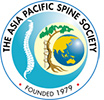Degenerative Disc Disease is a condition caused by wear and tear on the discs between the vertebrae causing them to lose their cushioning ability. This is a condition where the intervertebral disc, the gel-like material between the vertebrae, has begun to wear out due to aging, repetitive stress, smoking, genetics, etc. In most circumstances the cause is multi-factorial, and unless there is compression of the nerves or spinal cord, will not improve with surgery. It is a very common condition and may not even cause symptoms in many people.
In patients with degenerated lumbar disc, lower back pain is the most common symptom. Other symptoms include:
- Radiating pain to the hip and legs
- Numbness, weakness or tingling sensation in the legs
- Worsening of pain while sitting, standing, or walking
- Increased pain while bending, twisting or lifting
Degenerative Disc Disease can be treated with lumbar spinal fusion or lumbar artificial disc replacement procedure.
Lumbar spinal fusions
Spinal fusion, also called arthrodesis, is a surgical technique used to join two or more vertebrae (bones) within the spine. Lumbar fusion technique is the procedure of fusing the vertebrae in lumbar portion of the spine (lower back).
The surgery can be done as an open or laparoscopic (keyhole) surgery. Your surgeon may approach your spine from the back, abdomen, or neck, depending on the area to be treated.
In spinal fusion, a piece of bone, taken from other parts of the body or donated from a bone bank is transplanted between the adjacent vertebrae. Screws, plates, or cages may be used with the bone graft to help hold the spine.
During the surgery, your surgeon performs a discectomy where a portion of the diseased or damaged disc material is removed. After removal of the disc, the roof of the vertebra will be trimmed or removed to relieve the pressure on the nerve and this procedure is called as laminectomy. Following laminectomy, the bone graft (small chips of bone) will be placed alongside of the vertebrae between the vertebrae to be fused. Screws are placed into the vertebrae to be fused. Rods are attached to connect the screws, to stabilize and hold the bones together while the fusion heals.
Lumbar artificial disc replacements
Lumbar artificial disc replacement is a surgical method of replacing the diseased or damaged intervertebral discs of the spinal column with an artificial disc to restore motion to the spine. It can be considered as an alternative to spinal fusion for patients with low back pain.
During the surgery, an incision is made in the abdomen, and the muscles and the blood vessels are gently moved apart for better view and room for surgery. The disc space is opened and the damaged disc is removed and replaced with the artificial disc.
Disc design
Artificial disk designs are of two types, disc nucleus replacement and total disc replacement.With the disc nucleus replacement only the central portion of the disc (nucleus) is removed and replaced with mechanical device, while the outer ring of the disc (annulus) is not removed. In total artificial disc replacement, the annulus and nucleus are replaced with the mechanical device to restore normal spinal function. Artificial discs are usually made up of metal, plastic or a combination of metal and plastic. Medical grade plastic (polyethylene) and medical grade cobalt chromium or titanium alloy are used for discs.















